Abstract
Migrant and seasonal farmworkers often reside in poor housing conditions which expose them to numerous hazards. These housing conditions are an issue of environmental health and justice. The photographs in this essay illustrate the living conditions confronted by farmworkers, offering a visual context for the reviews published in this issue of New Solutions. Farmworker housing conditions are often shocking to those who have not visited farmworker communities. Continued research is needed to document these conditions, how they affect the health of farmworkers, and provide leverage in the struggle to improve farmworker housing conditions.
Keywords: Migrant and seasonal farmworkers, housing, environmental health, migrant labor
These photographs illustrate the living conditions confronted by farmworkers, offering a visual context for the reviews published in this issue of New Solutions. The images are representative of farmworker housing, acknowledging that some housing is better and other housing is far worse. Photographs taken in 2010 for a study of North Carolina migrant farmworker housing provide the foundation for this essay;1–5 these photographs reflect our observations of farmworker housing over the past two decades.6–9 Images from other states expand this context.
Farmworkers live in diverse structures, such as the barracks in Ohio and Texas (Photos 1 and 2), old farmhouse in Kentucky (Photo 3), reused mobile homes in North Carolina (Photo 4), and converted barn in Washington State (Photo 5), but the circumstances of these structures are often deplorable. Conditions in the North Carolina (Photo 6) and Kentucky (Photo 7) farmworker kitchens are cramped. The bathroom photographs (Photos 8 and 9) illustrate that privacy and dignity for farmworkers are often limited, with rows of toilets, showers, and basins that do not have privacy screens. Neither federal nor state regulations require privacy screens. Current regulations state that the washing machine and wash tub in this camp (Photo 10) are sufficient for sixty workers. Sleeping rooms (Photos 11 and 12) are often crowded and sparsely furnished; they should provide at least fifty square feet of space for each worker, plus sufficient storage for personal possessions.
Photo 1.
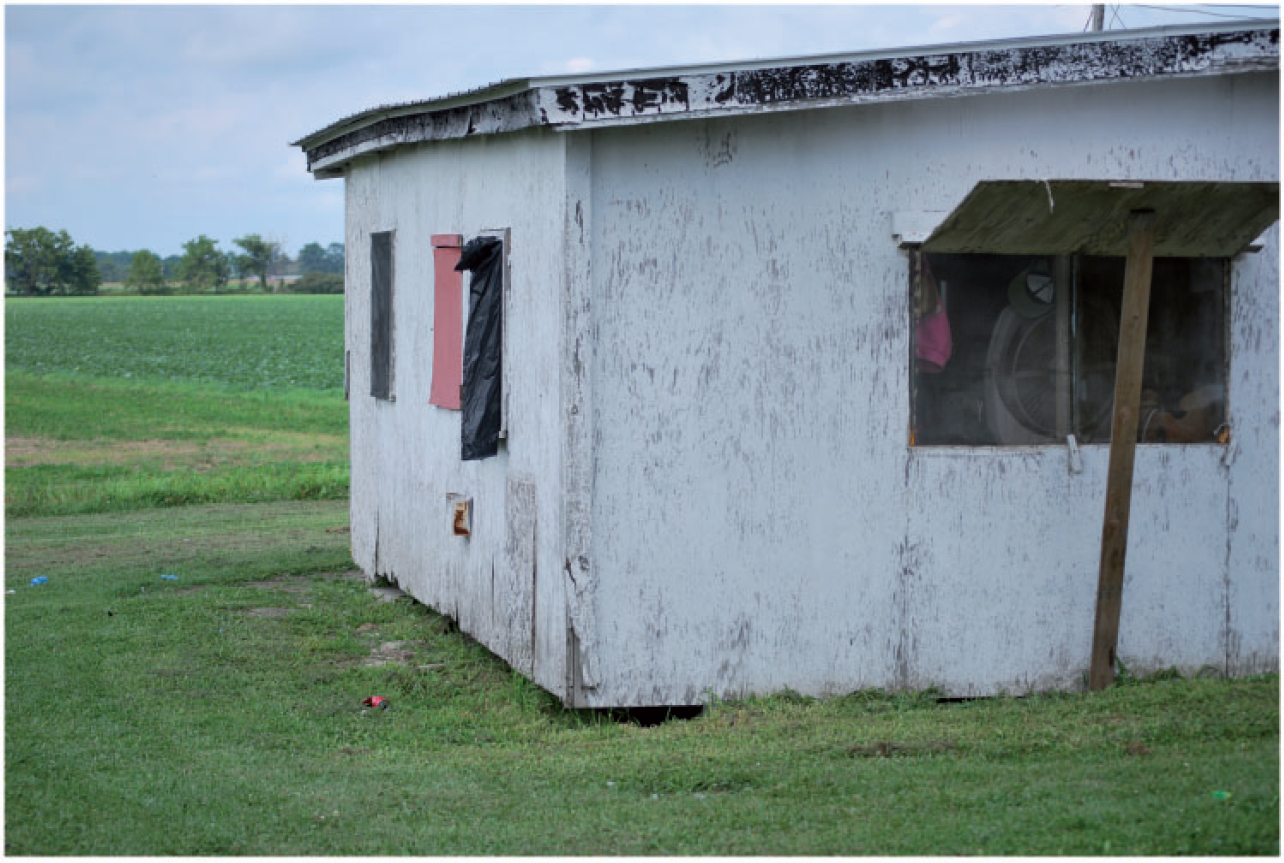
Farmworker barracks housing in Ohio. Courtesy: Eugenio Mollo, Jr., Advocates for Basic Legal Equality.
Photo 2.
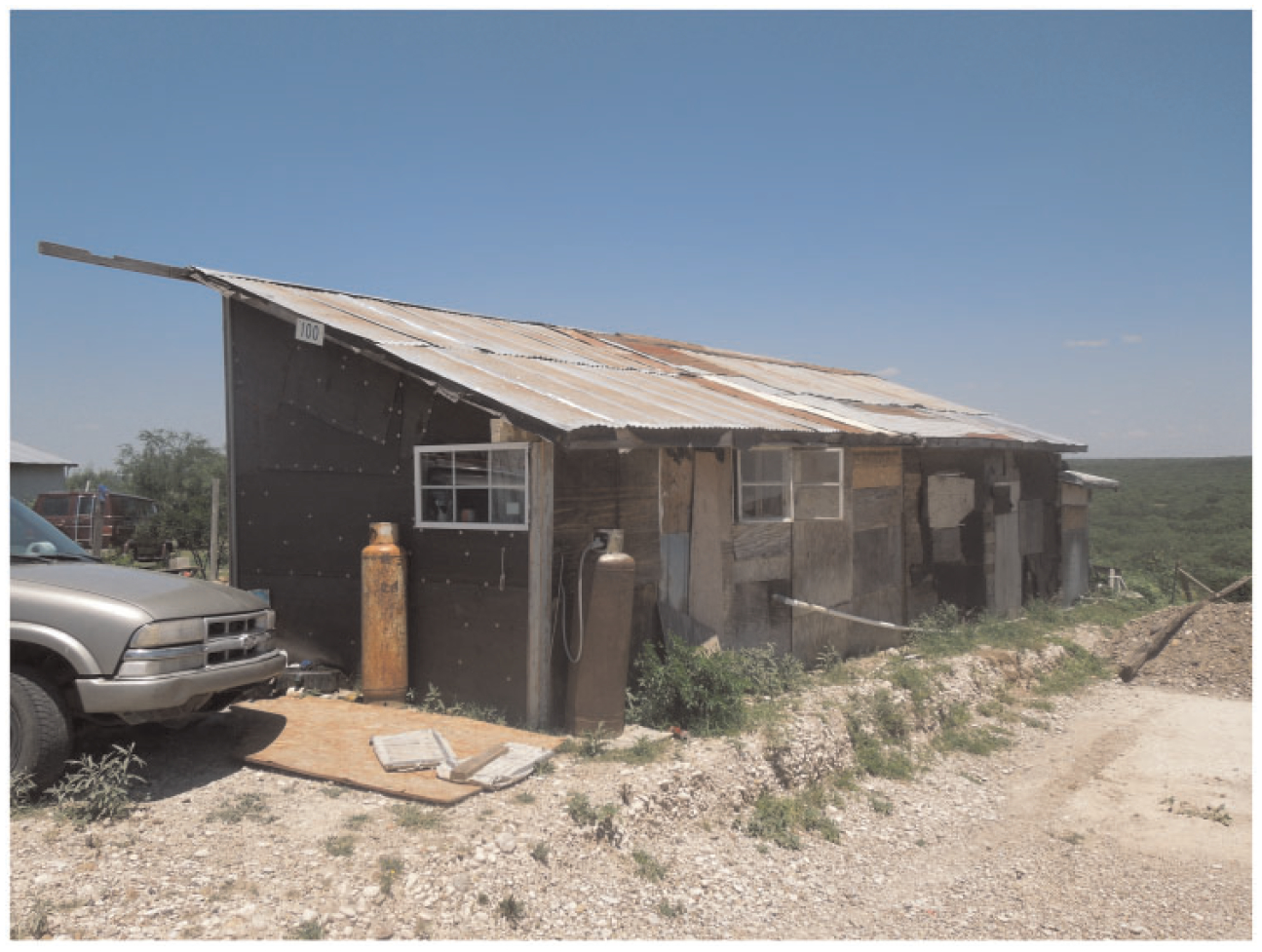
Farmworker barracks housing in Texas. Courtesy: Kathy Tyler, Motivation Education & Training, Inc.
Photo 3.
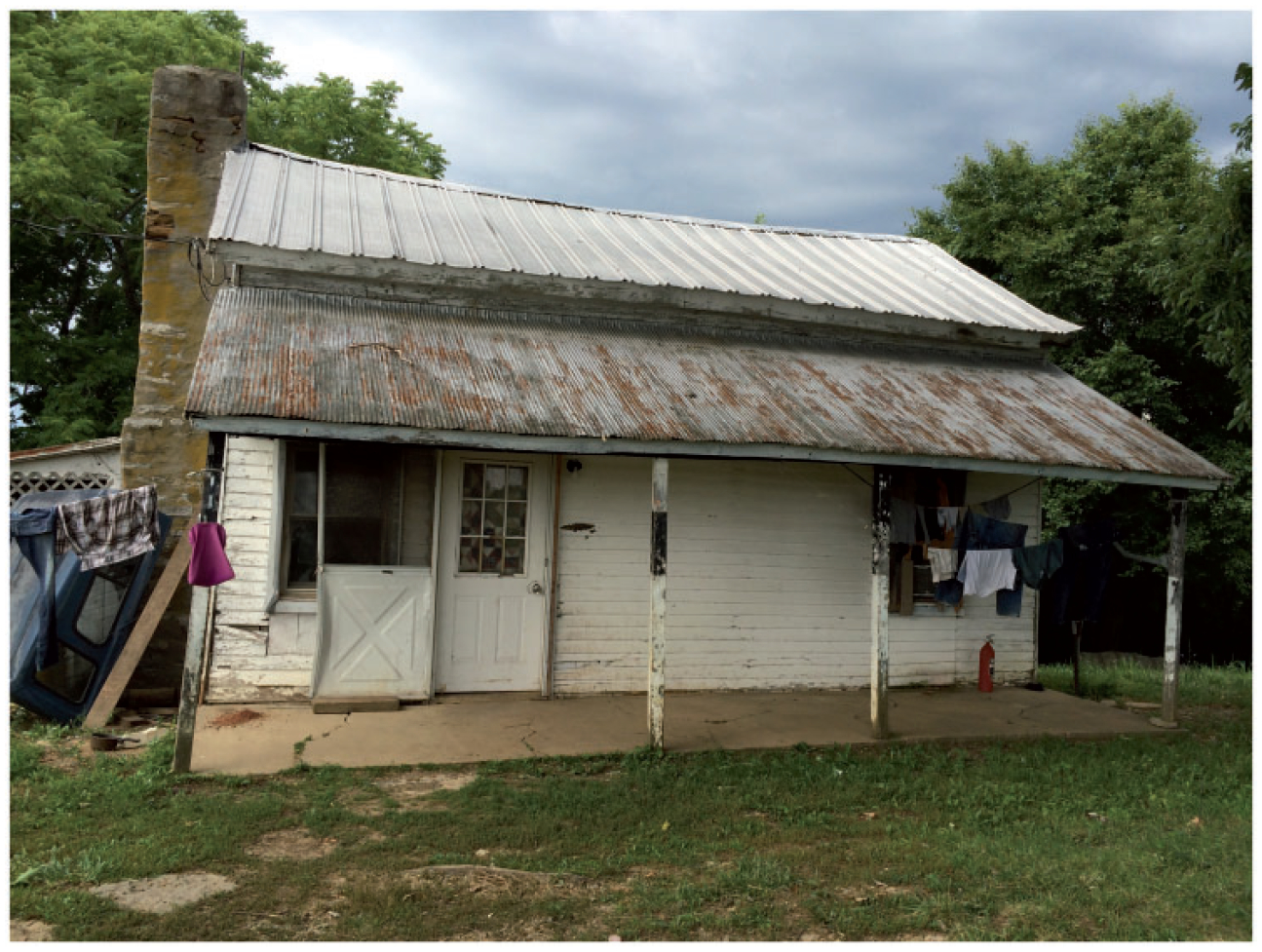
Old farm house used for farmworker housing in Kentucky, Southern Migrant Legal Services.
Photo 4.
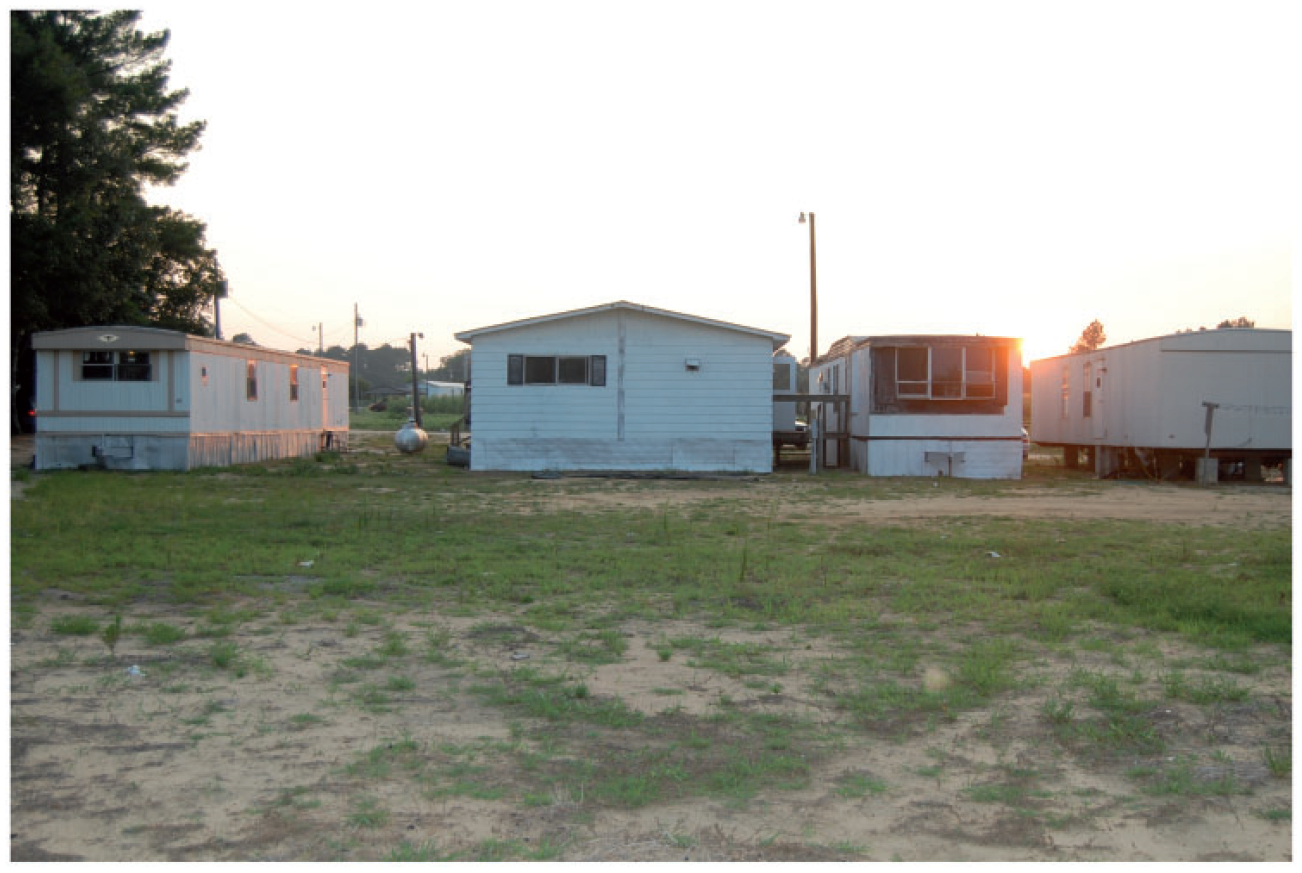
Used mobile homes salvaged for farmworker housing in North Carolina. Courtesy: Phillip Summers, Wake Forest School of Medicine.
Photo 5.
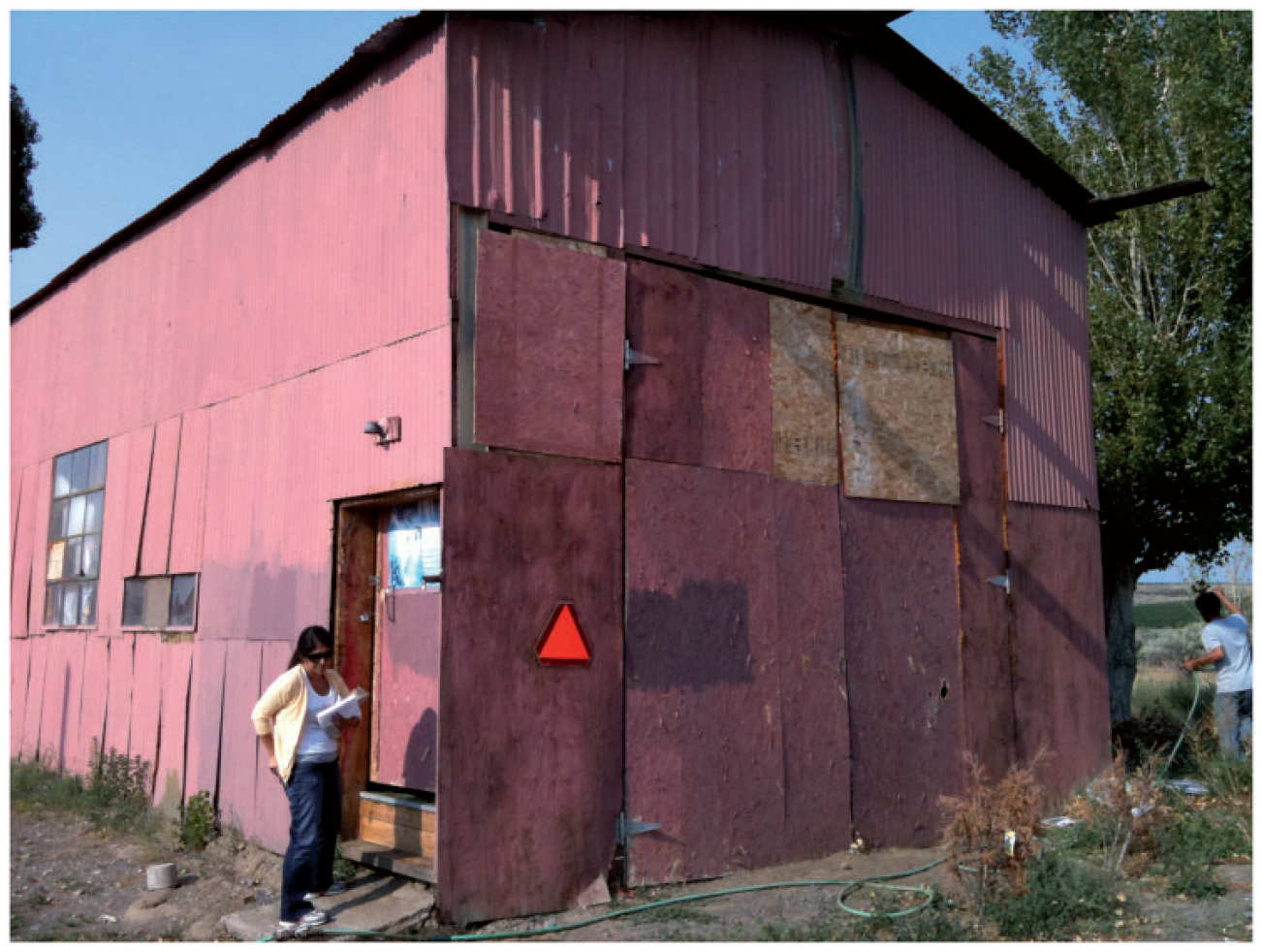
Washington State barn converted to farmworker housing. Courtesy: Daniel Ford, Columbia Legal Services.
Photo 6.
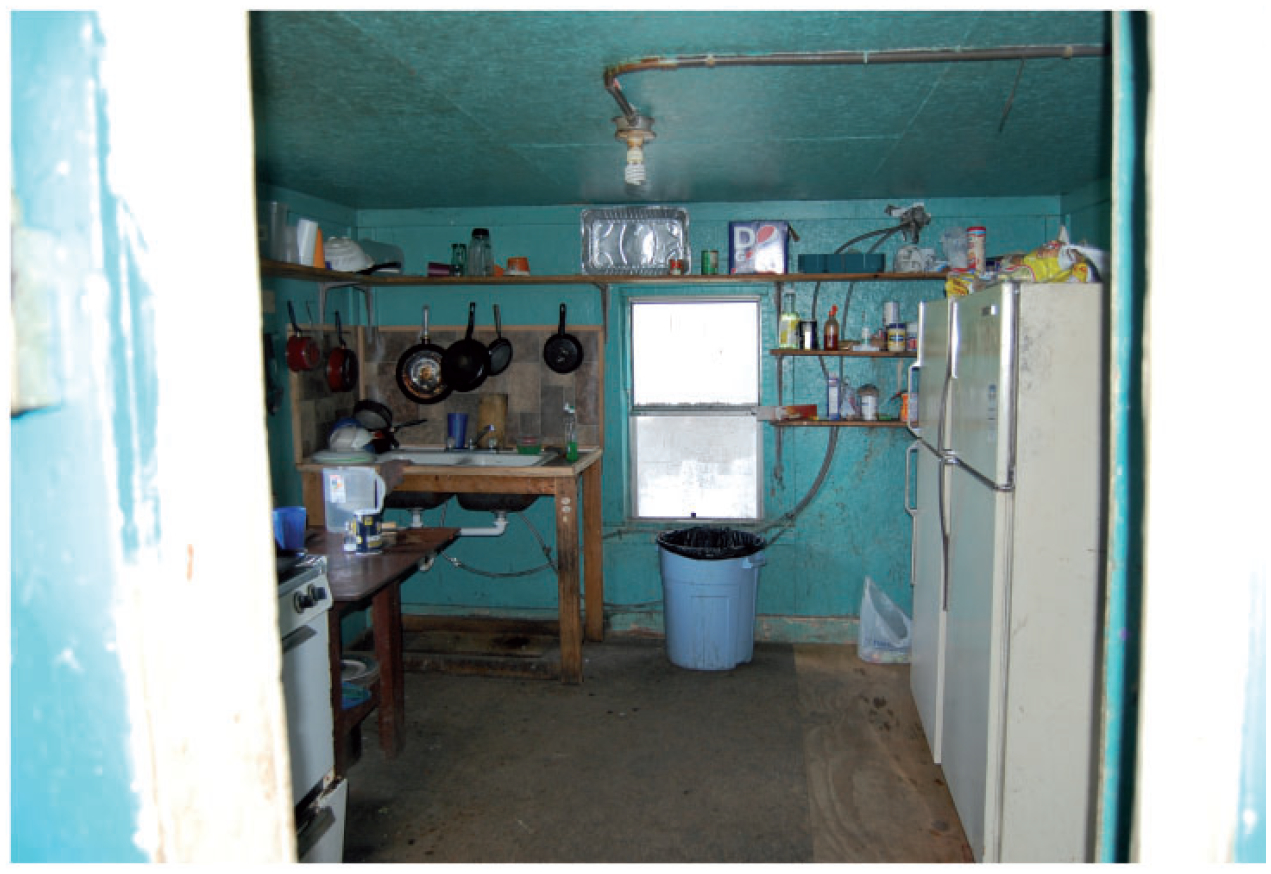
Kitchen in a North Carolina farmworker camp. Courtesy: Phillip Summers, Wake Forest School of Medicine.
Photo 7.
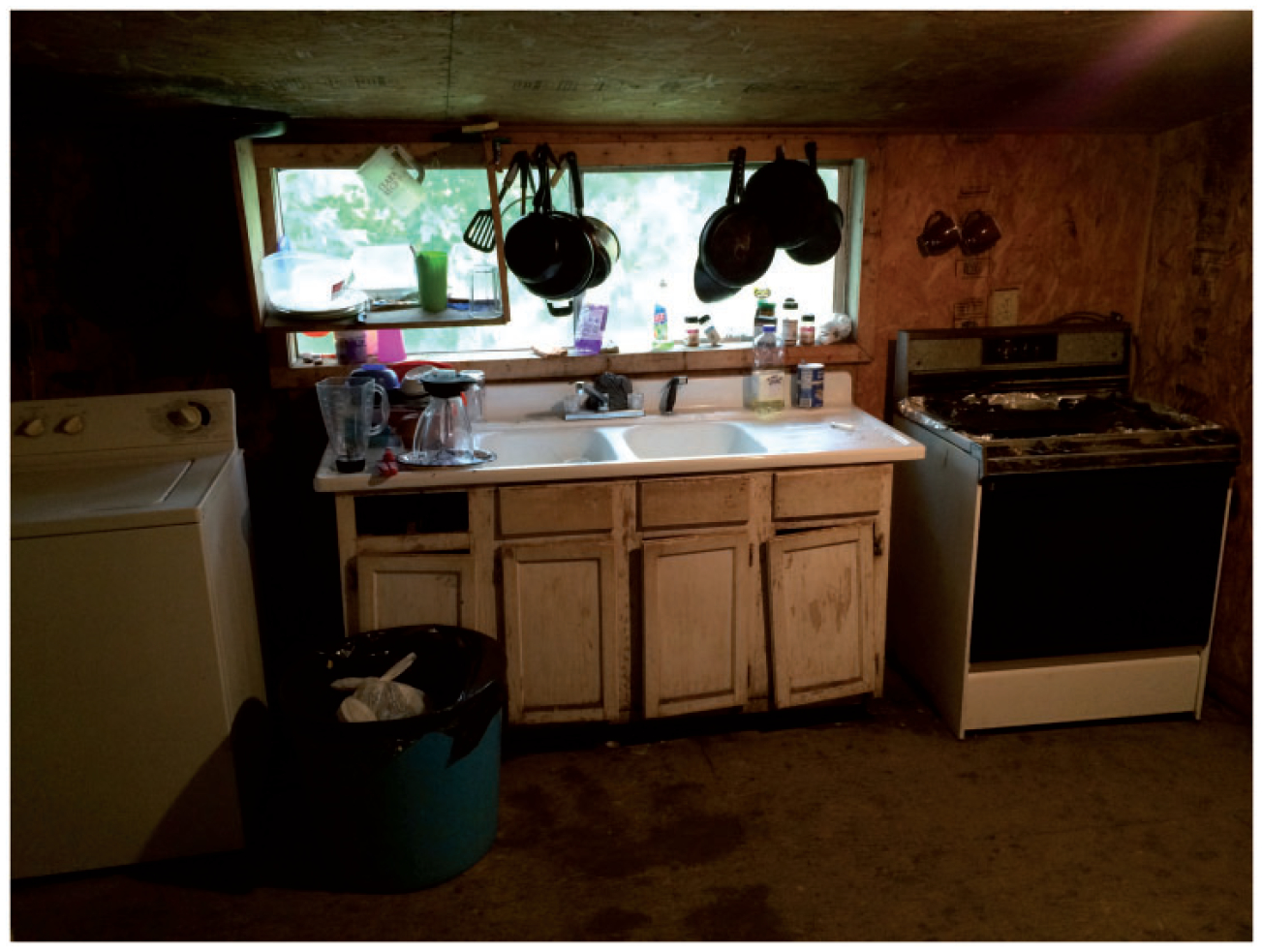
Kitchen in a Kentucky farmworker camp, Southern Migrant Legal Services.
Photo 8.
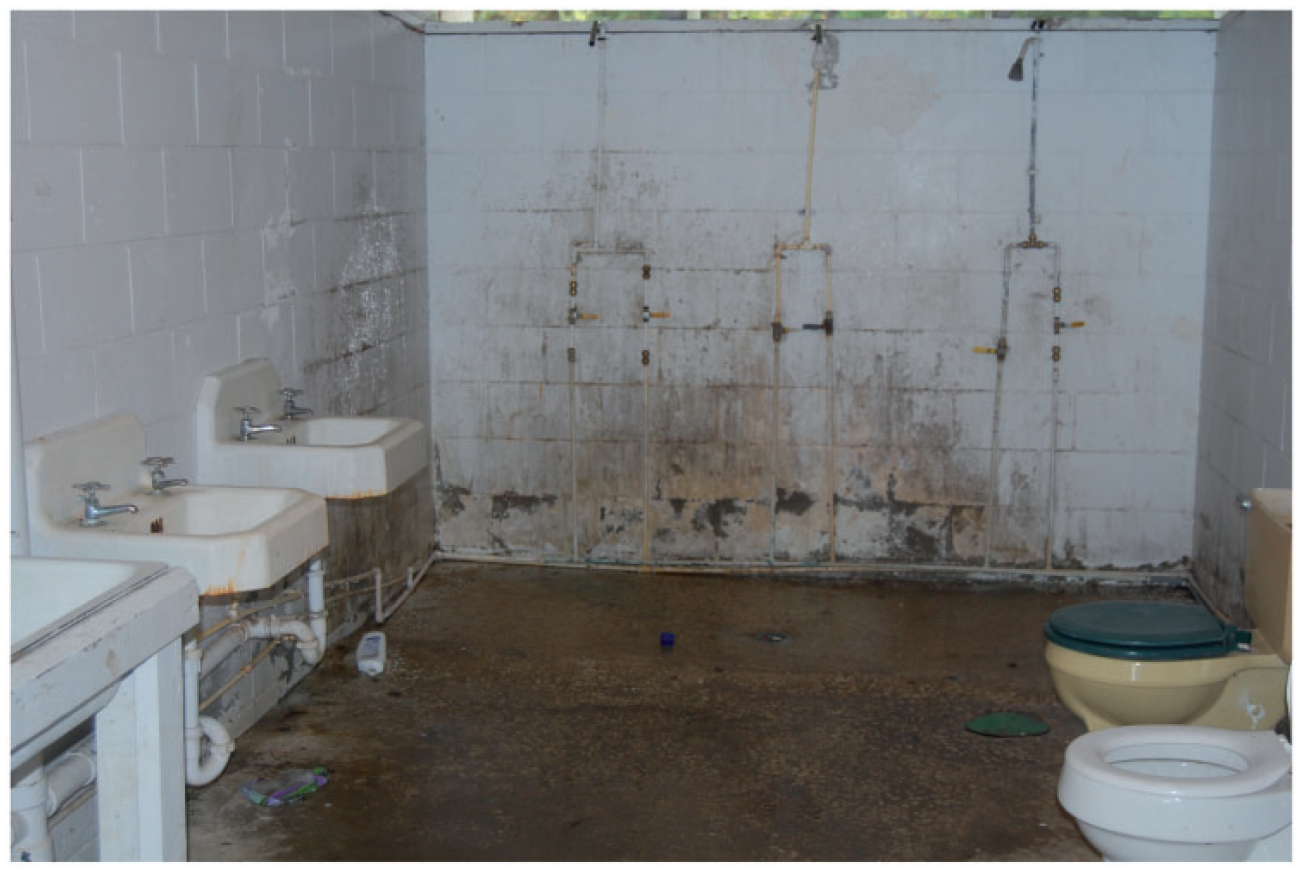
Bathroom with multiple toilets, showers, and basins in a North Carolina farmworker camp. Courtesy: Phillip Summers, Wake Forest School of Medicine.
Photo 9.
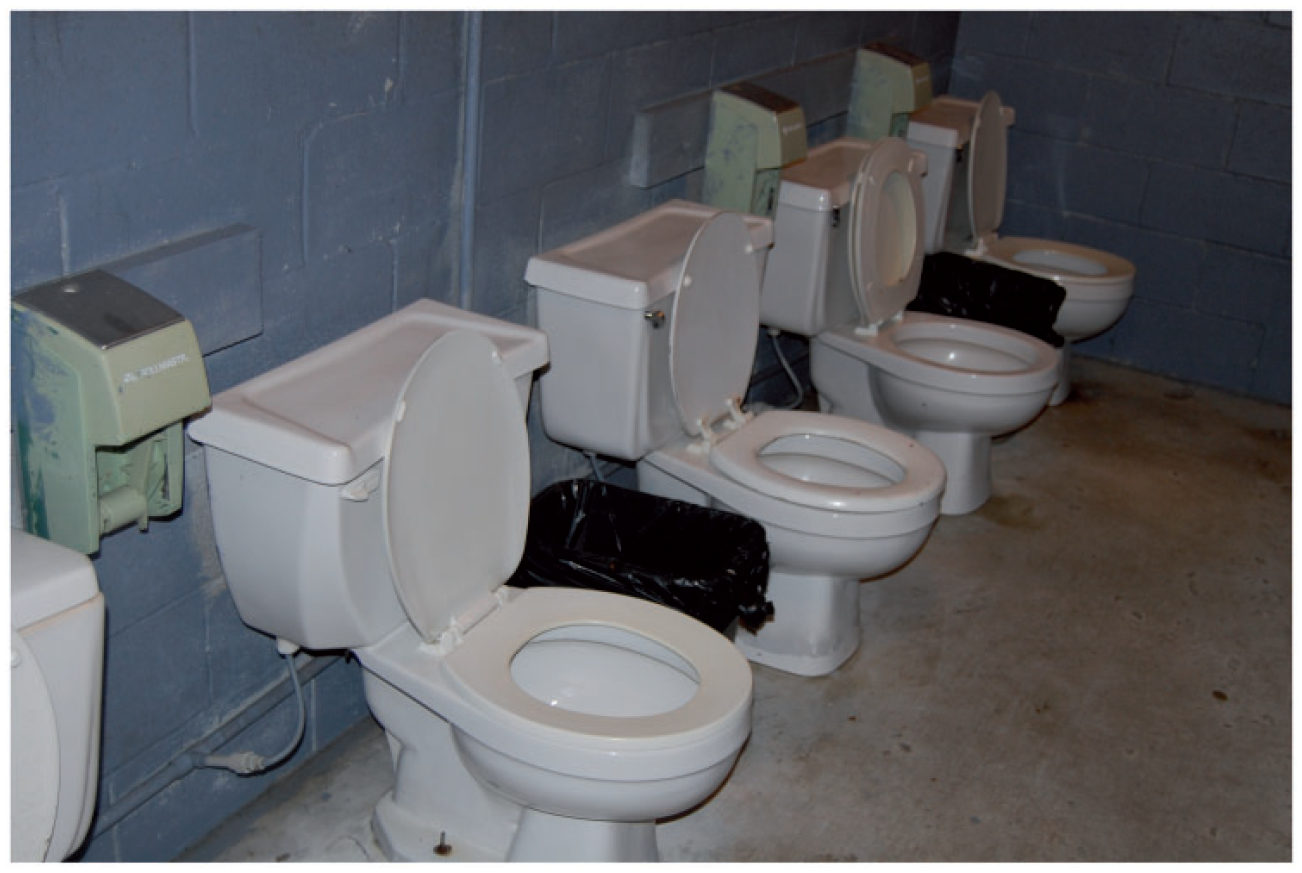
Multiple toilets in a North Carolina farmworker camp. Courtesy: Phillip Summers, Wake Forest School of Medicine.
Photo 10.
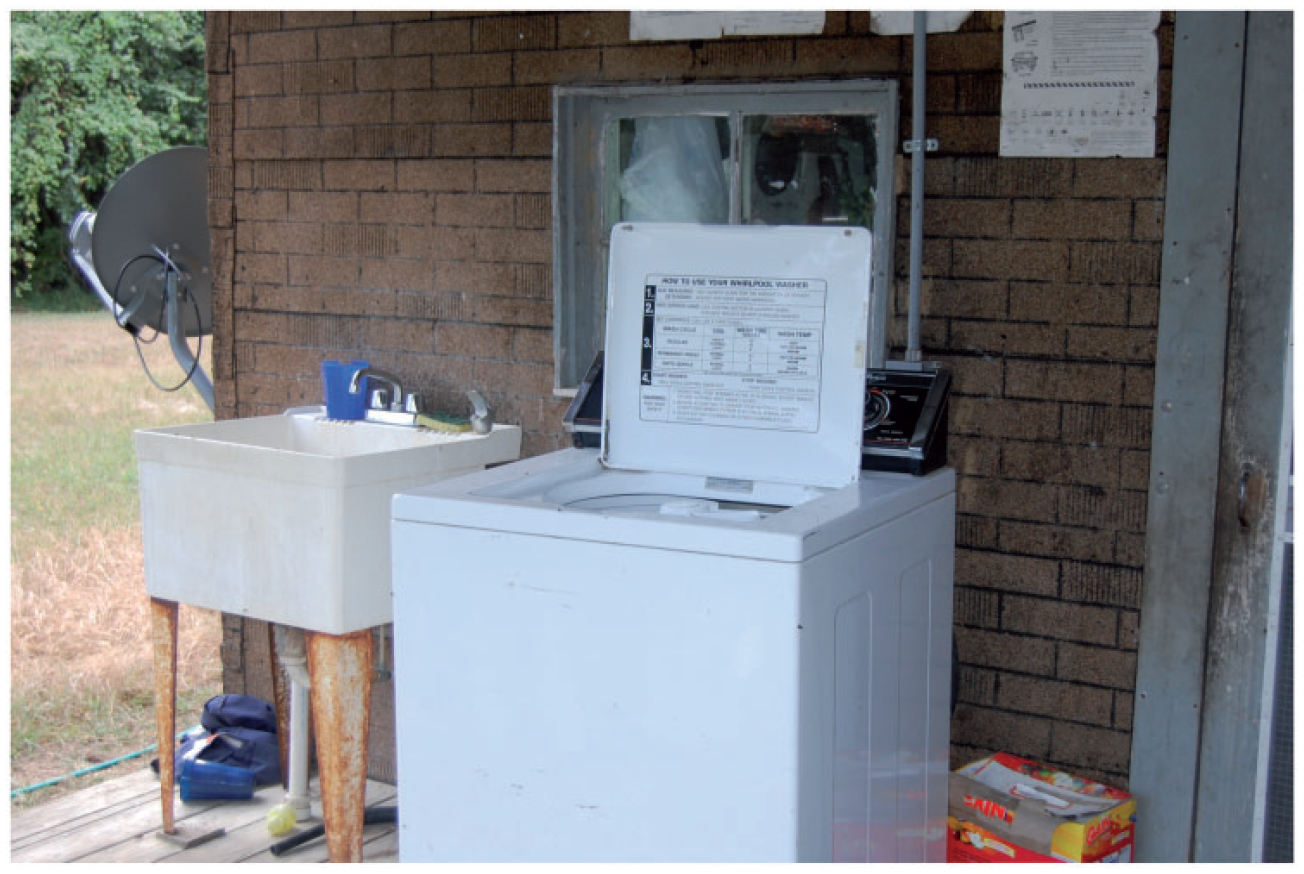
Laundry facility in a North Carolina farmworker camp. Courtesy: Phillip Summers, Wake Forest School of Medicine.
Photo 11.
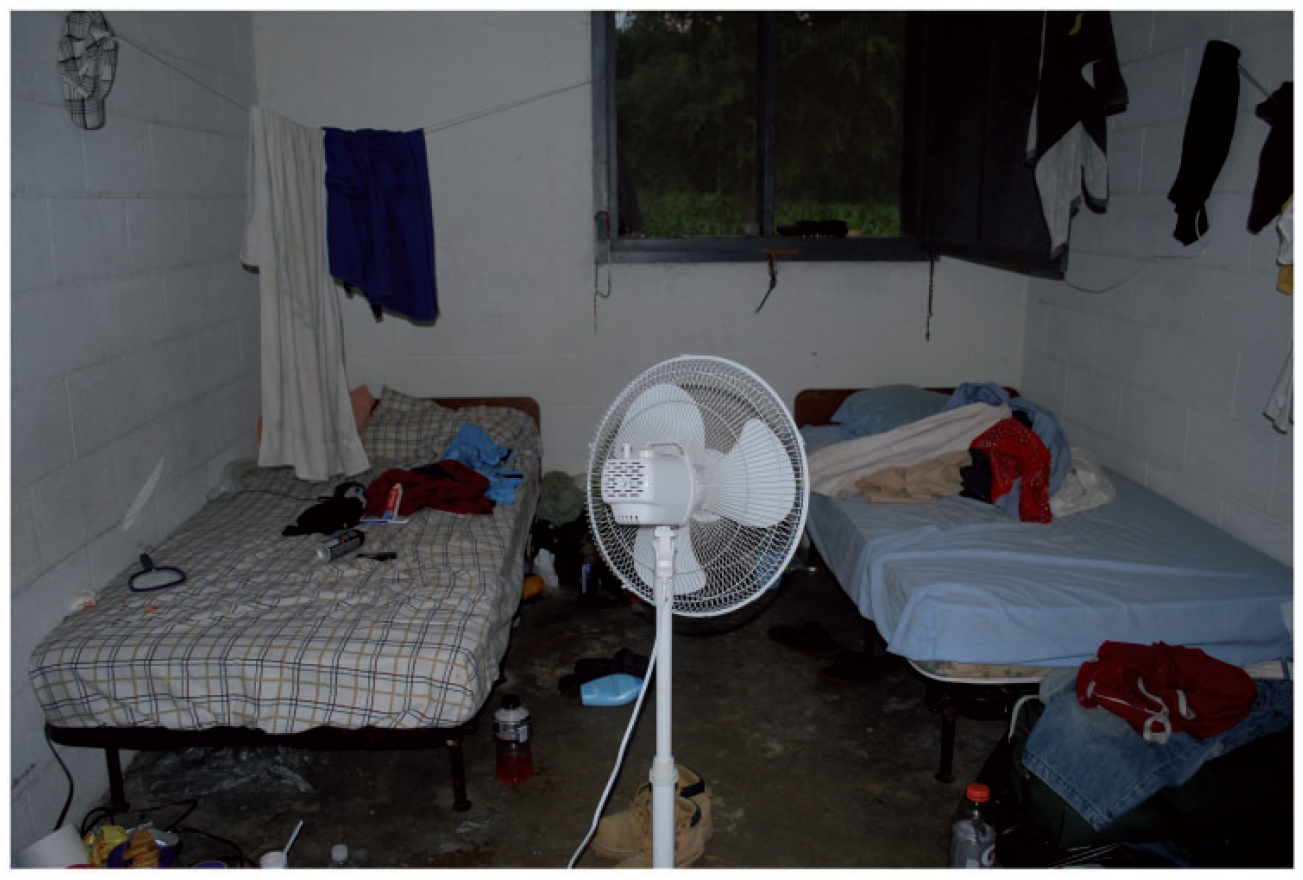
Sleeping room in a North Carolina farmworker camp. Courtesy: Maria Weir, Wake Forest School of Medicine.
Photo 12.
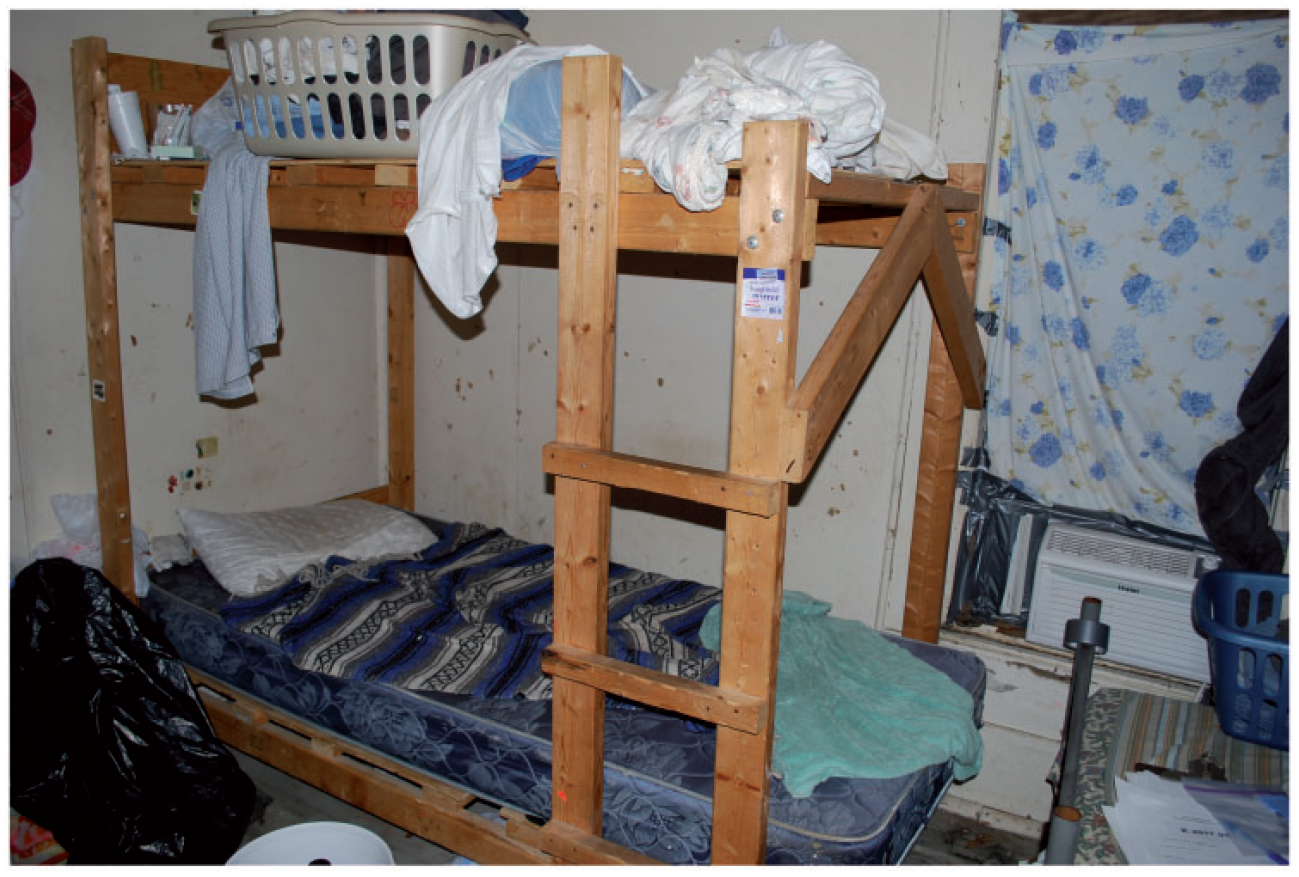
Sleeping room in a North Carolina farmworker camp. Courtesy: Maria Weir, Wake Forest School of Medicine.
Housing conditions commonly experienced by farmworkers are often shocking to those who have not visited farmworker communities. Continued research is needed to document these conditions and how they affect the health of farmworkers. This research will provide leverage in the struggle to improve housing standards and occupational safety for farmworkers and other vulnerable workers.
Funding
The author(s) disclosed receipt of the following financial support for the research, authorship, and/or publication of this article: This paper was produced for the conference “Farmworker Housing Quality and Health: A Transdisciplinary Conference,” organized by the Center for Worker Health, Wake Forest School of Medicine, California Rural Legal Assistance, Inc., and Farmworker Justice. Financial support for the conference was provided by the National Institute of Environmental Health Sciences (grant R13 ES023709); the United States Department of Agriculture; California Rural Legal Assistance; Inc.; Southeast Center for Agricultural Health & Injury Prevention, University of Kentucky (grant U54 OH007547); Southwest Center for Agricultural Health, Injury Prevention, and Education (grant U54 OH07541); and Western Center for Agricultural Health and Safety, University of California, Davis (grant U54OH009550).
Biographies
Thomas A. Arcury is a professor and vice chair for research in the Department of Family and Community Medicine and director of the Center for Worker Health at Wake Forest School of Medicine in Winston-Salem. He also directs the Program in Community Engagement, Wake Forest University Translational Science Institute. His research and practice address occupational health and justice for immigrant workers.
Phillip Summers is an assistant director for the Program in Community Engagement, Wake Forest University Translational Science Institute. His research and practice focus on health and justice for immigrants and reducing health disparities.
Footnotes
Declaration of conflicting interests
The author(s) declared no potential conflicts of interest with respect to the research, authorship, and/or publication of this article.
References
- 1.Arcury TA, Weir M, Chen H, et al. Migrant farmworker housing regulation violations in North Carolina. Am J Ind Med 2012; 55: 191–204. [DOI] [PMC free article] [PubMed] [Google Scholar]
- 2.Arcury TA, Weir MM, Summers P, et al. Safety, security, hygiene and privacy in migrant farmworker housing. New Solut 2012; 22: 153–173. [DOI] [PMC free article] [PubMed] [Google Scholar]
- 3.Quandt SA, Summers P, Bischoff WE, et al. Cooking and eating facilities in migrant farmworker housing in North Carolina. Am J Public Health 2013; 103: e78–e84. [DOI] [PMC free article] [PubMed] [Google Scholar]
- 4.Quandt SA, Wiggins MF, Chen H, et al. Heat index in migrant farmworker housing: implications for rest and recovery from work-related heat stress. Am J Public Health 2013; 103: e24–e26. [DOI] [PMC free article] [PubMed] [Google Scholar]
- 5.Keim-Malpass J, Spears Johnson CR, Quandt SA, et al. Perceptions of housing conditions among migrant farmworkers: implications for health, safety and social policy. Rural Remote Health 2015; 15: 3076. [PMC free article] [PubMed] [Google Scholar]
- 6.Quandt SA, Arcury TA, Rao P, et al. Agricultural and residential pesticides in wipe samples from farmworker family residences in North Carolina and Virginia. Environ Health Perspect 2004; 112: 382–387. [DOI] [PMC free article] [PubMed] [Google Scholar]
- 7.Early J, Davis SW, Quandt SA, et al. Housing characteristics of farmworker families in North Carolina. J Immigr Minor Health 2006; 8: 173–184. [DOI] [PubMed] [Google Scholar]
- 8.Gentry AL, Grzywacz JG, Quandt SA, et al. Housing quality among North Carolina farmworker families. J Agric Saf Health 2007; 13: 323–337. [DOI] [PubMed] [Google Scholar]
- 9.Vallejos QM, Quandt SA, Grzywacz JG, et al. Migrant farmworkers’ housing conditions across an agricultural season in North Carolina. Am J Ind Med 2011; 54: 533–544. [DOI] [PMC free article] [PubMed] [Google Scholar]


